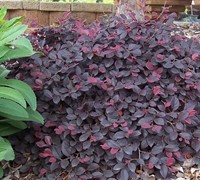Echinacea Coneflower
This featured plant this week is a beautiful hybrid variety of the common coneflower Echinacea purpurea. The Echinacea genus has nine species, all of which are commonly referred to as coneflowers. All species of Echinacea are native to eastern and central North America. These showy flowers are in the same family as daisies and sunflowers, and can be used for more than just a garden decoration.
Echinacea has been widely used by Native Americans of the Great Plains region as traditional medicines. The Kiowa used Echinacea to treat coughs and sore throats. The Cheyenne also used it to treat sore throats. The Pawnee used it for headaches, and other tribes (such as the Lakota) used it as pain medication. A Swiss herbal supplement maker heard about the Native American use of Echinacea, and so was born the popularity of Echinacea herbal products. In 2003, Echinacea sales represented 10% of the dietary supplement market!
The roots and above-ground parts of the plant are used fresh or dried to make teas, squeezed to make extracts, ground to make capsules and tablets, and even prepared for topical (external) use. Controlled clinical trials in humans can be tricky to run and analyze. As a scientist myself, I’m glad I haven’t had to work with humans for research subjects, because you can never control all of the variables in a clinical trial! Nevertheless, a meta-analysis conducted in 2015 and published in The Journal of the American Medical Association (JAMA) found evidence that Echinacea products may help to prevent the incidence of colds. And there is evidence that Echinacea activates the immune system in animal studies.
While there isn’t strong evidence for the effectiveness of Echinacea in controlled clinical trials with humans, there is enough evidence for me so that I personally take Echinacea whenever I feel I may be in a position to catch a cold (such as having just been in contact with someone else with a cold). Also, there is enough evidence in favor or Echinacea that the National Center for Complementary and Integrative Health (NCCIH) is continuing to fund studies to identify the active compounds in Echinacea and to study the effects of those compounds on the human immune system.
The biggest issue with Echinacea supplements (and any herbal supplement in fact) is the widely varying quality and composition of different Echinacea products. The U.S. Food and Drug Administration (FDA) does not regulate herbal supplements, and so products may differ in the part of the plant used, the extraction method used, or even more dangerously – may have contamination or adulteration with other products.
But you can grow your own Echinacea in your own garden and enjoy the beauty of the flowers in the spring and summer and then harvest your own Echinacea for medicinal uses. You could dry 1-2 grams of the roots or foliage to use in a tea. Or you could harvest the coneflower heads and soak them in alcohol (or glycerin) to create a tincture containing the active compounds. This is one plant that has multiple uses – aesthetic and utilitarian. What a nice way to get more for your money!














